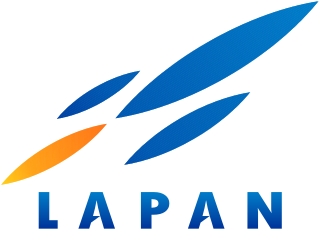
The Landsat program is the longest-running enterprise for acquisition of satellite imagery of Earth. On July 23, 1972 the Earth Resources Technology Satellite was launched. This was eventually renamed to Landsat. The most recent, Landsat 8, was launched on February 11, 2013. The instruments on the Landsat satellites have acquired millions of images. The images, archived in the United States and at Landsat receiving stations around the world, are a unique resource for global change research and applications in agriculture, cartography, geology, forestry, regional planning, surveillance and education, and can be viewed through the U.S. Geological Survey (USGS) 'EarthExplorer' website. Landsat 7 data has eight spectral bands with spatial resolutions ranging from 15 to 60 meters; the temporal resolution is 16 days. Landsat images are usually divided into scenes for easy downloading. Each Landsat scene is about 115 miles long and 115 miles wide.
International Traffic in Arms Regulations (ITAR) is a United States regulatory regime to restrict and control the export of defense and military related technologies to safeguard U.S. national security and further U.S. foreign policy objectives.

Space law is the body of law governing space-related activities, encompassing both international and domestic agreements, rules, and principles. Parameters of space law include space exploration, liability for damage, weapons use, rescue efforts, environmental preservation, information sharing, new technologies, and ethics. Other fields of law, such as administrative law, intellectual property law, arms control law, insurance law, environmental law, criminal law, and commercial law, are also integrated within space law.

As a federal agency, the National Aeronautics and Space Administration (NASA) receives its funding from the annual federal budget passed by the United States Congress. The following charts detail the amount of federal funding allotted to NASA each year over its history to pursue programs in aeronautics research, robotic spaceflight, technology development, and human space exploration programs. As of 2018, NASA employs 17,336 people.

The National Aeronautics and Space Act of 1958 is the United States federal statute that created the National Aeronautics and Space Administration (NASA). The Act, which followed close on the heels of the Soviet Union's launch of Sputnik, was drafted by the United States House Select Committee on Astronautics and Space Exploration and on July 29, 1958 was signed by President Eisenhower. Prior to enactment, the responsibility for space exploration was deemed primarily a military venture, in line with the Soviet model that had launched the first orbital satellite. In large measure, the Act was prompted by the lack of response by a US military infrastructure that seemed incapable of keeping up the space race.
The Science Subcommittee on Space and Aeronautics is one of six subcommittees of the United States House Committee on Science and Technology.

National Institute of Aeronautics and Space is the Indonesian government space agency. It was established on November 27, 1963, by former Indonesian president Sukarno after one year's existence of an informal space agency organization. LAPAN is responsible for long-term civilian and military aerospace research. For over two decades, it has managed satellites and domain-developed small scientific-technology satellites Lapan and telecommunication satellites Palapa, which were built by Hughes and launched from the US on Delta rockets or from French Guiana using Ariane 4 and Ariane 5 rockets. It has also developed sounding rockets and has been trying to develop small orbital space launchers. The LAPAN A1 in 2007 and LAPAN A2 satellites were launched by India in 2015.
The following outline is provided as an overview of and topical guide to the aerospace field:

The NASA Authorization Act of 2005 is an act of the United States Congress. It was signed by the then President George W. Bush and became Public Law 109-155 on December 30, 2005.
Title 34 of the United States Code is a non-positive law title of the United States Code with the heading "Crime Control and Law Enforcement." Released on September 1, 2017 by the Office of the Law Revision Counsel of the U.S. House, it contains "crime control and law enforcement programs or activities in which the Attorney General or the Department of Justice have been given primary responsibility." Much of the law transferred to Title 34 were laws editorially classified to sections of Title 42 or set out as notes to Titles 42, 18, and 28.
Space policy is the political decision-making process for, and application of, public policy of a state regarding spaceflight and uses of outer space, both for civilian and military purposes. International treaties, such as the 1967 Outer Space Treaty, attempt to maximize the peaceful uses of space and restrict the militarization of space.

The National Aeronautics and Space Administration is an independent agency of the United States Federal Government responsible for the civilian space program, as well as aeronautics and aerospace research.
Space Act Agreements are a type of legal agreement specified in the National Aeronautics and Space Act of 1958 that uniquely empowers NASA to work with any entity that enables fulfillment of the Administration's mandate. As recently as the 2010 authorization of :
The NASA Authorization Act of 2010 is a U.S. law authorizing NASA appropriations for fiscal years 2011, 2012, 2013 with the same top-line budget values as requested by US President Barack Obama. It resulted from the Augustine Commission's review of then-current manned space flight plans.
The space policy of the United States includes both the making of space policy through the legislative process, and the implementation of that policy in the civilian and military US space programs through regulatory agencies. The early history of United States space policy is linked to the US–Soviet Space Race of the 1960s, which gave way to the Space Shuttle program. There is a current debate on the post-Space Shuttle future of the civilian space program.

The Bolivarian Agency for Space Activities is an agency of the Ministry of Science of Venezuela, responsible for developing and carrying out policies of the National Executive Venezuela regarding the use of the outer space.

Commercial Space Launch Act of 1984 is a United States federal law authored to facilitate the private enterprise of the commercialization of space and space technology. The Act of Congress set forth the quest to acquire innovative equipment and services offered by entrepreneurial ventures from the information technology services, remote sensing technology, and telecommunications industries. The Act recognized the United States private sector as having the capability to develop commercial launch vehicles, orbital satellites, and operate private launch sites and services. The Act also assigned the duties of overseeing and coordinating commercial launches, issuing of licenses and permits, and promotion of safety standards to the Secretary of Department of Transportation.

The National Aeronautics and Space Administration Authorization Act of 2014 is a bill that would authorize the appropriation of $17.6 billion in fiscal year 2014 to the National Aeronautics and Space Administration (NASA). NASA would use the funding for human exploration of space, the Space Launch System, the Orion multipurpose crew vehicle, the commercial crew program, the International Space Station (ISS), and various technological and educational projects.

The space policy of the Donald Trump administration, as of December 2018, comprises four Space Policy Directives and an announced "National Space Strategy", representing a directional shift from the policy priorities and goals of his predecessor, Barack Obama. A fully articulated National Space Policy will not be issued, rather the NSS and the Presidential Space Directives are the only publicly available National Space Policy documents for the Trump administration to date.










